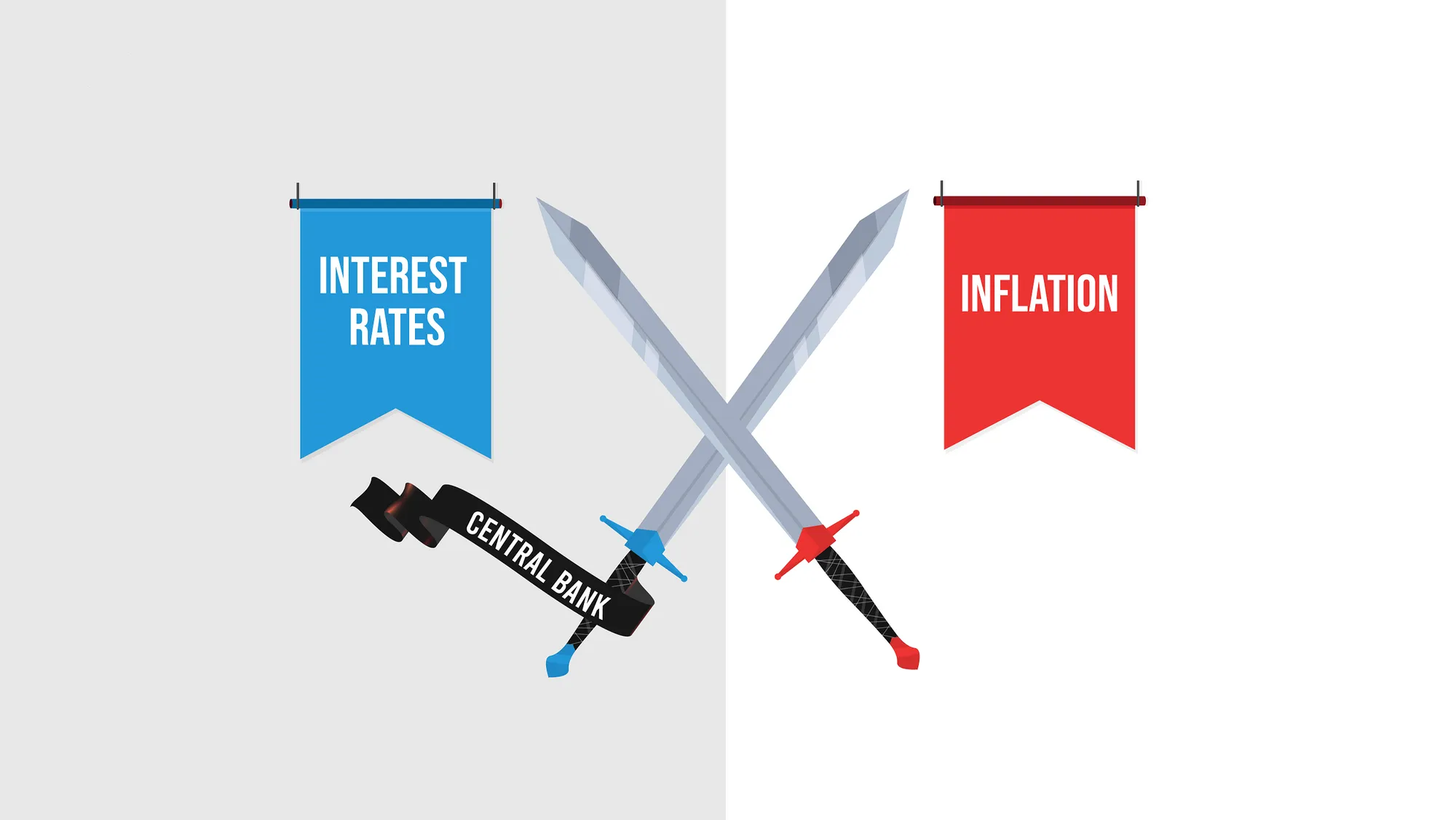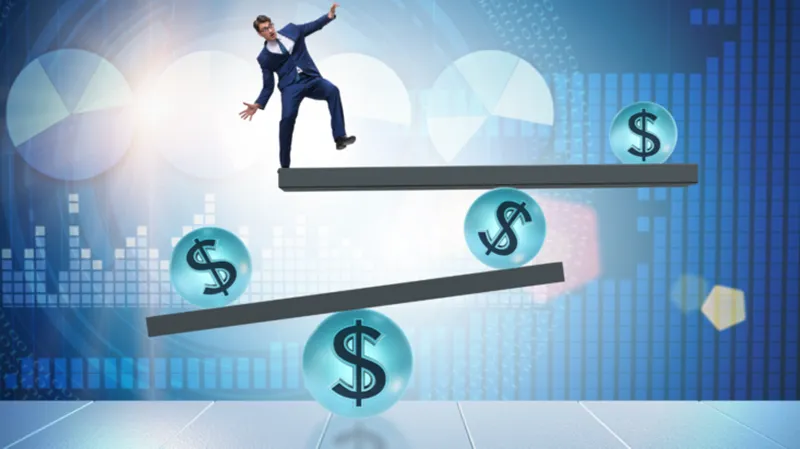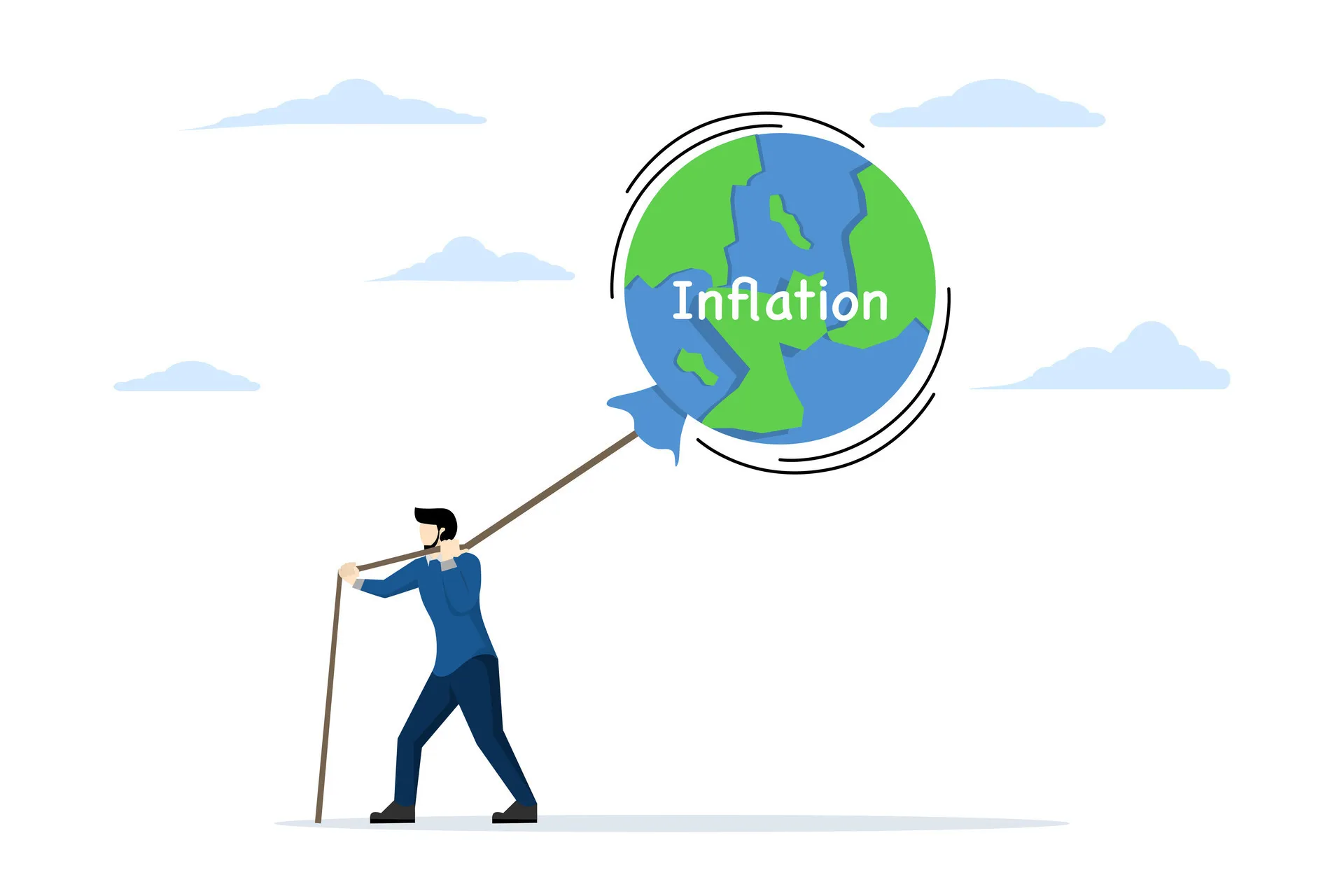Understanding how central bank interest rates and inflation interact is key to your money’s future. It’s like a game of tug-of-war: Central banks pull on the rates to keep inflation in check without crashing the growth party. Here, we dive into whether these interest tweaks really calm the raging inflation beast or if they add more heat to the fire. Stick with me and explore the inner workings of this financial seesaw. We’ll break down the smart moves and risky turns central banks take to steer our economy away from trouble. Get ready for a no-nonsense tour through the tactics that keep your cash from losing its muscle.
The Mechanics of Central Bank Interest Rates and Inflation
How Interest Rate Adjustments Influence Inflation
Central banks change interest rates to keep inflation just right. When prices climb too fast, they hike rates. Why? It’s simple: higher rates mean more costly borrowing. This cools people’s spendings, like putting less wood on a fire. Slow spending means prices rise slower.
So, what happens when rates drop? The opposite. Lower rates make loans cheap. People buy more, companies grow, and jobs pop up. Yet, too much of this can push prices to soar like a rocket. It can lead to inflation—too much money chasing too few goods.
The Federal Reserve and the European Central Bank use this tool a lot. They must decide when to hit the brakes or gas. Their decisions can shake the whole economy. It’s like they are DJing at a large party. They control the music’s volume to keep the party lively, without any noise complaints.
Assessing the Efficacy of Inflation Targeting Strategy
Inflation targeting is like setting a speed limit for price rises. Central banks say, “We’ll keep inflation about here.” This helps keep things predictable. Imagine driving with no speed signs—you’d be unsure and slow. Clear limits let us drive smoothly and safely.
With a clear target, central banks use rates to steer the economy. They aim for stable prices over time. This doesn’t squash growth but avoids evil inflation, the big fire that burns money’s worth.
But sticking to the target can be hard. Many things can push prices up or down. Banks must watch many signs—like the Consumer Price Index. This index shows if life’s getting pricier.
Banks also look ahead. They forecast inflation using complex guesswork. They are like weather forecasters for money. Their forecasts shape decisions on changing rates.
Is all this effort worth it? Well, it’s not perfect. Sometimes banks miss their target. Inflation can sneak up or fall flat. When it pops up, it eats savings and wages. But when it’s too low, things can stall. People stop buying, fearing prices will dip more. Banks must fight both these devils.
The central bank’s role is tough. They must juggle growth and stability. Price steadiness is their goal. It keeps the economy on a sweet steady path.
Overall, they act like guardians. Guardians against the chaos of runaway prices or a stalling economy. They try to keep our money good and strong. And when they get it right, we all win. We have jobs, our coins hold worth, and our tomorrow looks bright.
Central banks’ interest rate decisions can tame inflation. But it’s complex, and they must be careful. Too much action or too little can upend the cart. It’s a fine balance, holding the beast of inflation just right.
Evaluating Key Monetary Policies Amidst Varied Economic Conditions
Quantitative Easing and Its Impact on Inflationary Trends
Do you wonder how the big banks fight too high or too low prices? They use tools like a magic wand to nudge things in the right direction. One such tool is called “quantitative easing.” It sounds complex, but it’s just when a central bank, like the Federal Reserve, creates money to buy government bonds or other assets. Why do this? They aim to pump money into the economy, hoping businesses and folks will spend more and create jobs.
Let’s think of it like a game of hot potato. Money flows faster, and the goal is to not hold onto it for too long. This should lead to more jobs and people with more cash to buy stuff. But there’s a catch. If they overdo it, too much money chasing too few goods can push prices higher. That means when you go to buy bread or a new bike, you might find prices have jumped. This is how inflation can creep up.
If we want to keep tabs on this sneaky inflation, we check the Consumer Price Index, or CPI. It’s like a shopping basket with lots of different things like food and clothes. By peeking inside this basket over time, we can spot if prices are hopping up. Some brains at the bank predict where prices might go, helping them decide if it’s time to hit the brakes or gas on quantitative easing.
So, does it work? It can be a game-changer after a big money mess like 2008, but it’s all about balance. Too much can spark inflation, and too little might not jump-start the economy enough.
Tackling Deflation Risks vs. Hyperinflation
Now let’s say prices are dropping because people aren’t spending. That’s deflation, and it sounds good but can hurt jobs and businesses. Imagine you’re waiting to buy a skateboard because it might be cheaper next month. If everyone waits, shops sell less, have to cut jobs, and the slowdown can snowball. Central banks don’t want this chilly economy. They might cut interest rates, making it cheaper to borrow for a boat or business, encouraging spending and warming things up.
But watch out! There’s an opposite danger called hyperinflation, where prices zoom like a rocket. Say a loaf of bread costs one dollar one day, then two dollars the next. People rush to buy before prices leap again, leading to a cycle hard to stop. It’s rare, but when it happens, central banks act fast to hike up interest rates and cool off this heat.
In all this fuss between deflation and dragon-like hyperinflation, banks have a tough job. They need to dodge both ditches, striving to keep prices stable so your dollar today is worth a dollar tomorrow. And that’s the central bank’s critical mission – using interest rates and other tricks to keep our money’s magic just right.
The Dual Mandate: Balancing Inflation with Unemployment
Analyzing the Phillips Curve in Modern Economies
Central banks often have a big job. They must keep prices stable and help folks find jobs. These two tasks can pull in opposite directions. That’s where the Phillips Curve comes in. It shows a link between inflation and jobs. Or more precisely, between inflation and unemployment.
The curve says: when more people work, prices tend to go up. This happens because workers have more money to spend. Businesses then raise prices. This can make the value of money go down. This is what we call inflation. But, when few people work, prices don’t rise as fast. Sometimes they don’t rise at all.
The big question is: is the Phillips Curve still useful today? My answer is simple: sometimes. It depends on the economy. Let’s break it down.
In strong economies, with lots of jobs, inflation does often go up. Here, the Phillips Curve makes sense. On the flip side, in weak economies, fewer jobs can mean less inflation. But it’s tricky. There are times when the economy is tough and prices still rise. This can happen with bad supply shocks, like an oil price hike.
So, we see the Phillips Curve is not a rule that always applies. It’s a pattern we watch. It can give us clues about what might happen. Yet, as an expert, I watch it with cautious eyes. Central banks use it as one tool in their big toolkit.
The Interplay Between Negative Interest Rates and Job Growth
Now, let’s talk about negative interest rates. These are rates below zero. It sounds weird, right? Banks actually charge money to keep your savings. It’s like a hot potato game. No one wants to hold the cash.
So, what do negative rates do for jobs? The idea is to make people spend or invest rather than save. More spending can mean businesses need more workers. This can be good. It means more jobs.
But it’s not all rosy. Saving money should be a good thing. But with negative rates, it’s not. Also, banks find it hard to make money. They might lend less. That’s not great for businesses or jobs.
In some places, like Europe, they’ve tried negative rates. Has it worked? In some ways, yes. In others, no. It’s a mixed bag.
To sum it up: Negative rates aim to boost job growth. By making saving less attractive and spending more appealing. But they can also have downsides. They can hurt savers and banks.
In my view, central banks weigh these pros and cons carefully. Every step they take aims to keep the job market healthy and prices in check. It’s like walking a tightrope. One wrong move and down you go. But with skill and care, they can make it across. That’s the delicate balance of monetary policy. And that’s how they handle both inflation and jobs. It’s challenging, but it’s crucial for our economy.
Forward Guidance and Managing Market Expectations
Strategies for Inflation Expectations Management
Experts know a secret about how banks slow or speed up spending. The Federal Reserve sometimes drops hints to banks and investors. These clues tell what might happen with money in the future. This way is called “forward guidance”. It helps people guess how prices will change. Guessing the future of money is tough, but banks try to help. They say, “this is what we might do,” so people can plan.
The banks’ big goal is to keep prices from jumping up or down too fast. They want things to cost about the same over time. To do this, they have a plan called “inflation targeting strategy.” The bank decides a good rise in prices each year. Say, around 2 percent is their usual target. Then, they change the cost to borrow money, the “interest rate,” to hit that target.
When people think prices will go up, they spend more now to save money later. The bank tries to stop big price jumps by setting goals and guiding. If they do it right, your cash stays strong, and savings keep their worth. But when banks make a mistake, prices can go wild, or spending drops.
Banks also use a tool called “quantitative easing” when things get bad. They pour money into banks to make borrowing cheap. This can kickstart spending and lift prices if they’re too low. Yet, if overused, it could make prices climb too high.
The Role of Inflation Forecast Modeling in Policymaking
Here comes the tricky part — deciding what to do next. Banks look at a ton of numbers, like the “consumer price index” (CPI). CPI is a basket of goods that shows how much things cost. They track it over time to see price changes. Using these numbers, they try to predict what prices will do. This guesswork is “inflation rate forecasting.”
Banks want to stay ahead of the game. So they also make a “map” of where they think prices will go, called “inflation forecast modeling.” It shows possible future prices. When they see trouble, they can act quick by changing the interest rate again.
Remember, it’s all about balance. They control how much it costs for banks to hold money (“bank reserve requirements”). They can make it cheap or costly for banks to borrow (“discount rate”). And they watch how much banks lend to each other too (“interbank lending rate”). All these moves can calm or excite the cash in our wallets.
For the people lending or saving money, interest rates say if it’s a good time to do so. High rates may make you want to save more, but spend less. Low rates call for shopping and big buys like homes or cars.
In the end, banks play a big part in our money world. They hold a powerful stick to keep our spending and saving in check. They hike up rates to cool off price hikes, or cut them to spark spending. Their crafty use of rates and smart models keep our money’s health in check. It’s a fine dance between too much and too little, but they’ve got moves to keep us all grooving.
We’ve explored how central banks use interest rates to control inflation. We’ve seen that adjusting rates can slow or speed up the economy, and aiming for just-right inflation is key. We also dove into how policies like quantitative easing affect prices and what’s done when inflation gets too low or high. We learned that keeping inflation and unemployment balanced is tricky, and how experts use the Phillips Curve and negative rates to try and keep jobs up without prices soaring. Lastly, we looked at how banks promise future actions to keep markets steady and how forecasts help them make smart choices.
On this complex topic, what stands out is that there’s no one-size-fits-all answer. Banks must be sharp and nimble, shifting gears as the road ahead changes. By understanding these tools, you’re better equipped to see why and how your own finances might change with the economic tide.
Q&A :
How do central bank interest rates affect inflation?
The link between central bank interest rates and inflation is a fundamental concept in monetary policy. When central banks alter interest rates, they aim to control economic activity by making borrowing more or less expensive. As rates decrease, loans become cheaper, potentially leading to increased spending and investment, which can drive prices up (inflation). Conversely, when rates rise, borrowing costs increase, slowing down economic activity and reducing inflationary pressures.
What happens to inflation when a central bank lowers interest rates?
When a central bank lowers interest rates, it encourages businesses and consumers to borrow and spend more because of the lower cost of borrowing. This increased demand for goods and services can lead to higher prices, as the supply may not immediately keep up with demand. Consequently, if not managed carefully, this can lead to an uptick in inflation rates. However, this is typically what a central bank aims to achieve when inflation is below its target level.
Can high central bank interest rates control inflation?
Yes, high central bank interest rates can be an effective tool to control inflation. By increasing the cost of borrowing, central banks can dampen consumer spending and business investment, leading to a reduction in demand for goods and services. This decrease in demand can help to slow down the rate at which prices are rising, effectively controlling inflation. However, this approach can also lead to slower economic growth and potentially a recession if applied too aggressively.
Why might a central bank choose to maintain low-interest rates despite rising inflation?
A central bank may choose to maintain low-interest rates despite rising inflation for several reasons. One reason could be to support economic recovery, particularly if the economy is experiencing high unemployment or weak growth. Low rates can stimulate borrowing and investment that lead to job creation and economic expansion. Additionally, if inflation is deemed temporary or due to factors that interest rates wouldn’t affect, such as supply chain issues, a central bank may tolerate a higher inflation rate temporarily.
How do central banks balance the need for low-interest rates with the risk of inflation?
Central banks balance the need for low-interest rates with the risk of inflation by closely monitoring economic indicators and using various monetary policy tools. They need to strike a balance between fostering economic growth and keeping inflation under control. This often involves gradual adjustments to interest rates, as well as forward guidance to the markets to set expectations. Central banks may also employ other measures, such as adjusting reserve requirements or engaging in open market operations, to fine-tune economic conditions.






